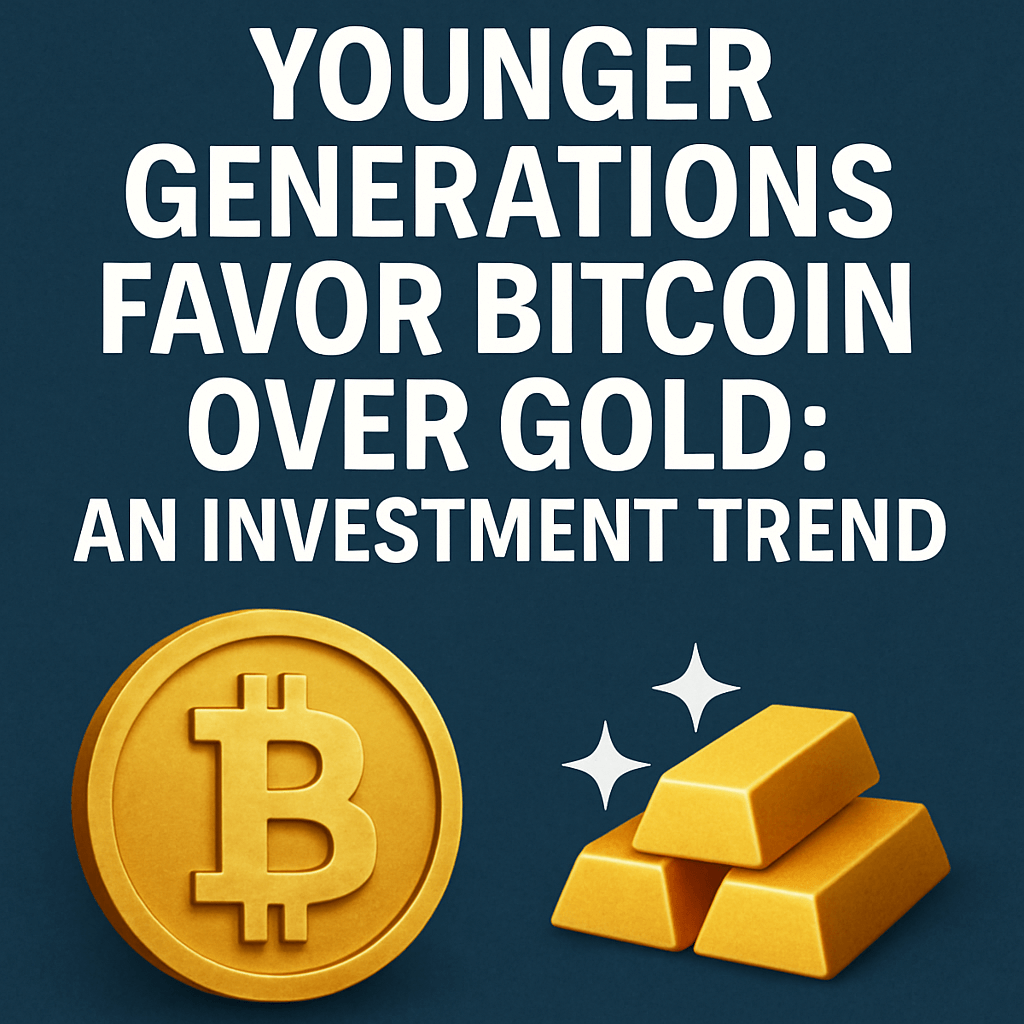Younger Generations Favor Bitcoin Over Gold: An Investment Trend

As gold prices hover near record highs, propelled by unprecedented central bank demand, a recent global poll conducted by deVere Group reveals a striking shift in investment preferences among younger demographics. The survey, which encompassed 730 clients worldwide, indicates that a substantial 73% of investors aged 24 to 45 now favor Bitcoin over gold as a long-term investment.
Changing Investment Paradigms Among Younger Generations
This notable trend illustrates a dramatic mindset shift among younger investors, even amidst the backdrop of central banks accumulating gold at levels not seen in decades. According to Nigel Green, CEO of deVere Group, a major player in independent financial advisory and asset management, this momentum towards Bitcoin among younger investors is undeniable.
“They see it as digital gold – borderless, accessible, and aligned with the future,” said Green. “But gold is far from obsolete. In fact, it’s surging.”
Cental Banks and Their Gold Accumulation Strategies
Recent analysis highlights that central banks are purchasing approximately 80 metric tonnes of gold each month, translating to a staggering $8.5 billion based on current prices. This demand indicates a strategic move to safeguard reserves against inflation and currency fluctuations. Notably, trade data suggests that countries like China and other unidentified players are major contributors to this gold buying spree, often executing purchases through Switzerland.
- Combined with sovereign wealth funds, it’s estimated these entities are amassing over 1,000 tonnes of gold annually, which represents around 25% of the total global mined supply, as reported by the World Gold Council.
- Such aggressive accumulation has contributed significantly to the current bull market in gold, leading prices to breach historical highs.
Gold vs. Bitcoin: Analyzing Asset Profiles
Earlier this year, Nigel Green forecasted a future where gold might ascend to $5,000 per ounce by 2025, while Bitcoin could reach an astounding $150,000. This dual forecast highlights the contrasting roles these assets play in modern investment strategies, with Green emphasizing:
“The two are not rivals. They are radically different assets solving different problems. Gold represents stability; Bitcoin embodies growth.”
Taking a balanced approach that encompasses both assets could be crucial in mitigating risks associated with macroeconomic turbulence, changing monetary policies, and geopolitical uncertainties. Green advises against an “either-or” mentality:
- “The world’s most powerful institutions are increasing their gold reserves. They don’t make these moves without purpose.”
- Bitcoin’s inherent structure, along with its limited supply, presents a compelling case for young investors who are often skeptical of traditional financial systems.
Younger Generations and the Appeal of Bitcoin
Among the respondents surveyed by deVere, many cited Bitcoin’s transparency, portability, and potential for dramatic price appreciation as leading reasons for their favor towards it. Furthermore, the asset’s operation outside conventional banking systems is a notable advantage for many in this age group. This perspective reflects a broader trend of individuals seeking alternatives to traditional assets amid concerns over inflation and purchasing power erosion.
The Role of Market Dynamics
Current market dynamics are evolving, with Bitcoin increasingly gaining acceptance across various sectors. The introduction of spot ETFs in major financial markets, heightened corporate adoption, and a friendlier regulatory landscape all contribute to Bitcoin’s legitimacy and appeal. Green points out:
“We’re witnessing a rare convergence – the old guard doubling down on gold and the new guard gravitating toward Bitcoin.”
This dual trajectory is driven by overlapping fears about monetary stability and risk management, making it imperative for investors to assess their strategies in light of these developments.
Conclusion: A Balanced Investment Approach
As central banks continue their strategic gold accumulation and Bitcoin moves toward greater mainstream acceptance, investors must navigate this complex landscape with care. Green concludes:
“This isn’t about choosing between Bitcoin and gold. It’s positioning oneself for a future where monetary policy, technology, and global influence are all undergoing significant changes.”
The core message resonates with a timeless investment principle: diversification. By holding a balanced mix of uncorrelated assets, investors can build a resilient portfolio that effectively navigates the uncertainties of a rapidly evolving financial landscape.